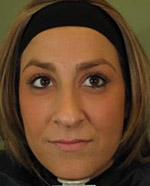Melanoma
Advanced Dermatology and Cosmetic Care offers the latest melanoma treatment in Santa Clarita, Los Angeles and surrounding areas. Beginning in the cells that make pigment melanin, melanoma is one of the most serious types of skin cancer. However, if recognized early, melanoma is almost 100 percent curable. If left untreated, it can spread to other parts of the body and become very difficult to treat. In some cases, it can become fatal. Although it is not the most common form of skin cancer, it does cause the most fatalities.
Everyone has some risk of developing melanoma. Certain factors can increase one’s risk in developing skin cancer, including: skin type, family history, sun exposure and the amount of moles present on the body.
Skin Type
People with fair skin are at a higher risk of developing melanoma.
Family History
If your mother, father, sibling or children have had melanoma, you have a 50 percent chance of being developing melanoma. While the risk is not as great, if your grandmother, grandfather, aunt, uncle, niece or nephew has had the cancer, your risks are increased.
Sun Exposure
The risk of developing skin cancer, including melanoma, is increased by excessive exposure to UVA and UVB rays. While early childhood blistering sunburns can increase one’s risk of developing melanoma, cumulative sun exposure is a larger factor. People living closer to the equator (Florida, Hawaii and Australia) receive more sunlight year round; therefore, the number of people developing skin cancer is greater. Using tanning beds can also increase your chance of developing melanoma and other types of skin cancer, so we recommend you avoid these.
Moles
There are two types of moles: normal moles and atypical moles. No matter the type of mole, the greater number of moles a person has, the risk of developing melanoma is greater.
If you fall into any of the above categories, we recommend you protect your skin with a strong SPF sunscreen daily and remember to have a yearly exam by a dermatologist.
Usually, moles, brown spots and growths on the skin are harmless, but can sometimes become pre-cancerous or cancerous. It is important to know your skin well so you can easily recognize any changes in the moles on your body. Follow the ABCDEs of melanoma to help you recognize any abnormalities.
- Asymmetry: When one half of the mole should doesn’t match the other half of the mole.
- Border: When the border or edges of the mole are blurred or irregular.
- Color: When the color of the mole is not consistent.
- Diameter: When the diameter of the mole is larger than 1/4 of an inch.
- Evolving: When there is any change in size, shape, color or elevation, or if any new symptoms occur such as itching or bleeding.














